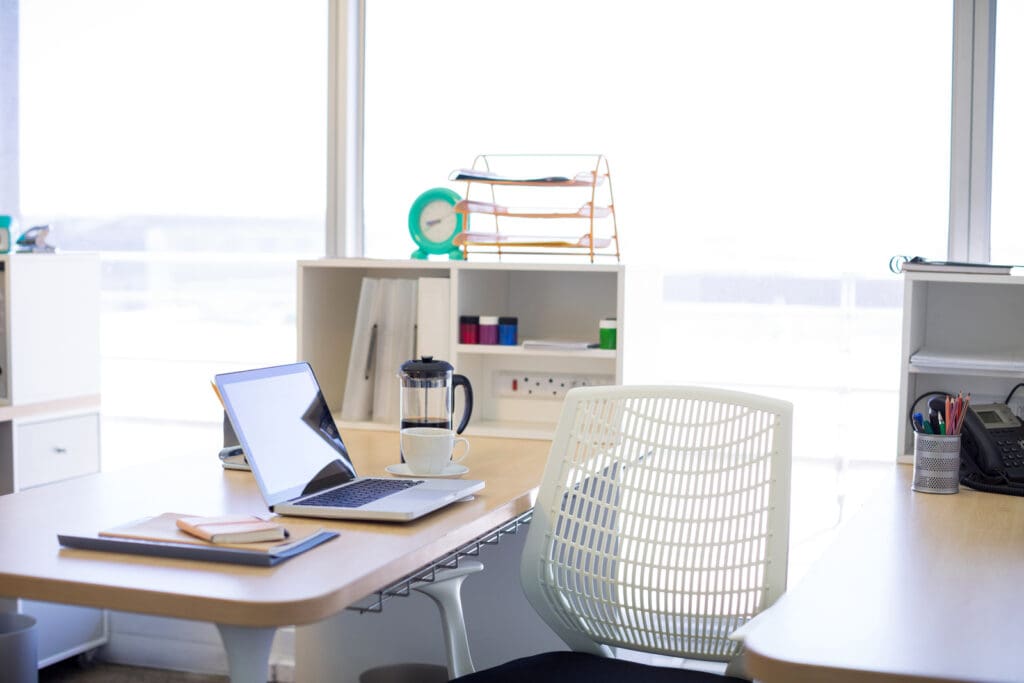A workplace, in the traditional sense, is the physical location where the employees of an organization get their work done. But in modern times, the definition of a workplace has become very flexible due to remote and hybrid work policies, evolving office spaces and dynamic nature of work.
Today, you can see many different kinds of workspaces, including the traditional desk-and-cubicle model, agile workspaces, shared co-working spaces, outdoor workstations, remote work locations, etc. Regardless of the kind of workplace, a healthy work environment is of utmost importance to keep employees motivated and productive.
What are some work environment mistakes?
Here are some things that might hamper the well being of your employees and the productivity of your organization.
Poor communication
Conveying information to the concerned stakeholders at the right time, and in the right manner, is key to avoiding misunderstandings and unnecessary delays. It is important to ensure that before delegating a task, leaders give a clear idea of expectations about the quality of work, targets, deadlines and what the outcome would mean for the company. Similarly, employees should be trained in how to clearly communicate the status of ongoing work, need for help, doubts, and expected time of completion.
Over or under working
The American Psychological Association (APA), in their 2023 Work in America Survey, found that 95% of people wanted their organization to respect the boundaries between their work and non-work time. When employees are overworked, they get the message that their employer doesn’t care about their mental health and work life balance. Nobody would want to work in such a demanding and thankless work environment.

On the other hand, if employees are underworked, it is a breeding ground for slacking, silent quitting and overall decline in motivation. Employees don’t feel the need to upskill or involve themselves in any productive activity, and their professional life becomes stagnant. It is a bad outcome for both employees and employers.
Micromanagement
Supervisors who like to “run a tight ship”, and who always want things done a certain way, often end up doing more harm than good. When employees feel like their supervisor doesn’t trust them to make good decisions on their own, it creates an atmosphere of alienation and suspicion.

Such a work environment gives rise to an apathetic attitude among employees, wherein they feel like they “don’t get paid enough to care”. As a result, they may distance themselves from their work and avoid giving suggestions, which is a great loss to the organization.
Lack of recognition
While it is important for employees to become aware of their mistakes, it is equally essential for them to feel appreciated for what they are doing right. If their hard work is not recognized, they might feel like they are bad at their job, leading to a decline in work motivation. A worse possibility is that they might get the idea that their performance doesn’t really matter, and they might tone down their efforts.
Exclusion and discrimination
According to the World Health Organization, poor working environments, including discrimination and inequality, pose a risk to mental health. Accommodating employees with diverse identities, backgrounds and abilities is very important for creating a friendly and inclusive atmosphere in the workplace. Often, the physical layout of offices is not accessible to people with disabilities.

In some cases, the staff is not sensitive to the cultural background, socio-economic level, or sexual/gender identity of their coworkers. Diversity and sensitivity training is very important for avoiding a sense of exclusion and discrimination among employees.
How to create a better work environment?
Now that we have discussed the common pitfalls in an office work environment, let’s look at the things you can do to improve one!
Know whom to hire and fire!
There is nothing more off-putting than a bad fit between employees and the organization. The HR department wields the power to make or break an organization with its choice of employees.

Hiring good people is not just about skills, qualifications and experience. It is about whether a candidate can thrive in the work environment, whether they can lead, be a team player and brainstorm their way through obstacles.
At the same time, people who are not adding value to the organization, hinder the productivity of those around them, and don’t take their job seriously, are unreliable at best and dangerous at worst! Unethical behaviour at work, dishonesty, and repeated violation of rules are clear red flags. Other situations, like work related mistakes and bad decisions, can present as grey areas. It is important to discuss every incident from all perspectives before reaching a conclusion.
Deciding to fire a bad employee is just one part of the job, how you do it matters as much! Schedule an appointment in advance, discuss the reasons why you have decided to terminate, the severance package (if applicable) and their options after termination. It is important to remain transparent and compassionate through this difficult process.
Physical layout and appearance
There are many ways in which an office layout can be organized. It could be an open concept space, have private offices, or it could be a community workspace where employees can constantly see and interact with each other while working.

Agile workplaces are catching on as a recent trend. Such a workplace includes furniture that can be dismantled and reorganized as per the changing needs of an office. Ask your employees what they like, and try to accommodate their needs in your plan. For example, if you find that taking frequent short breaks enhances productivity, you can make space for standing desks, walking meetings, and designated areas for physical exercise.
Ensure that basic amenities like lighting, heating/cooling, water and hot beverages, bathrooms, etc. are provided adequately. Pleasant fragrances and soothing colors are a nice touch. With more employees opting for remote work, it is important to make on-site work appealing to the people in the office.
Improve communication with employees
Communication is an important part of all relationships, including professional ones. Team leaders should be trained in how to maintain transparent two-way communication channels. For example, saying “We need to improve our performance in the next quarter” is a vague message.
Instead, talk about clear goals like “We aim to exceed our previous sales figure by 15%. Let’s have a meeting on Monday to discuss where we are falling behind, and how we can improve. Looking forward to hear everyone’s suggestions!”

Creating a good work environment, both in terms of the physical space and social interactions among people, is crucial for boosting motivation and productivity. Poor communication, over/underworking, micromanagement, lack of recognition and a feeling of exclusion and discrimination prevents people from reaching their true potential in the workplace.
The work environment largely depends on the physical layout of the office, the person-organization fit, and communication among employees at all levels. When individuals feel valued, supported, and surrounded by positivity, their creativity and dedication flourish. Just like a well-tended garden yields abundant fruits, a conducive work atmosphere cultivates productivity and teamwork.


GIPHY App Key not set. Please check settings